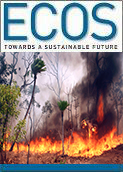
|
Published: 6 October 2014
Diverse experiences make for happy tourists in remote areas
A new report has painted a picture of a dynamic Aboriginal and Torres Strait Islander (ATSI) tourism industry that is highly diverse, covers a wealth of Australia’s most iconic landscapes, and has a strong network of partnerships and collaborations between enterprises.

|
|
Exploring the Top End Credit:
Ninti One
|
The report was compiled by Dr Damien Jacobsen and Margaret Tiyce for the CRC for Remote Economic Participation and Ninti One.
It found that 9 out of 10 remote ATSI tourism enterprises surveyed collaborate with other enterprises to provide visitors with a widely varied and rewarding experience.
More than half the business owners surveyed in the report expressed confidence that the remote tourism industry will continue to grow over the next 2 years.
Operators identify their main challenges as seasonality, high operational costs in remote locations, the need to attract young talent into the industry, and isolation.
One of the industry’s best features is the remarkable diversity of enterprises, largely based around the wide variation of landscapes – and the strength of the partnering between them, Dr Jacobsen says.
‘We found clear evidence that, as enterprise cooperation increases, the value-creation processes become much more robust.
‘Overall, around 92 per cent of survey participants stated that cooperation is either very important or important for the competiveness of their enterprises.’
Commonly offered products and experiences include walking tours, bush tucker experiences, cultural awareness tours, and tours of story places and heritage sites.
These usually require comparatively fewer inputs than other tourism businesses such as campsites and caravan parks, eco-lodges, restaurant/cafés and conference venues – however both groups work closely together.
‘We also identified opportunities to build on the existing tourism model,’ Dr Jacobsen says.
‘For example, only around 23 per cent of our surveyed businesses use horizontal integration (improving a main product by adding new characteristics) to diversify their product.
‘In contrast, 77 per cent use vertical integration (adding new products different from a main product) to diversify the products and experiences they offer to visitors.
‘We think there is considerable scope for remote tourism enterprises to learn from one another in this regard.’
The top three external sources of business advice and support are state tourism agencies (72 per cent), consultants (50 per cent) and other Aboriginal and Torres Strait Islander tourism operators (44 per cent).
The study concludes that remote operators have many options for developing their businesses.
‘Each enterprise needs to view itself as a part of their region and see the interrelationships possible with other enterprises that offer products, services and experiences to visitors,’ added Dr Jacobsen.
Source: Ninti One



